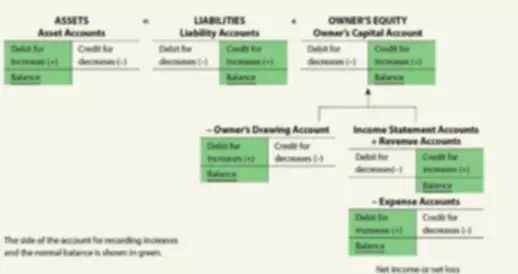How To Calculate LIFO And FIFO?
Content
- What Are the Other Inventory Valuation Methods?
- The Bottom Line: Which Is Better LIFO Or FIFO?
- Tax Accounting Methods: How To Calculate LIFO And FIFO
- The Accounting University with 3400+ Accounting contents as study material which can watch, read and learn anyone, anywhere.
- Calculating Inventory Cost Using FIFO
- Fifo Lifo Calculator
- What Inventory Costing Method Would Be Preferred if Prices Are Rising?

And, you can easily calculate ending inventory by using multiple valuation methods including, fifo, lifo, and weighted-average cost. The inventory valuation method you choose can affect amount of taxes you pay the government. LIFO and FIFO are the most popular methods used in the United States, but which one is preferable depends on your individual business circumstances.

Under first-in, first-out method, the costs are chronologically charged to cost of goods sold i.e., the first costs incurred are first costs charged to cost of goods sold . This article explains the use of first-in, first-out method in a periodic inventory system. If you want to read about its use in a perpetual inventory system, read “first-in, first-out method in perpetual https://www.bookstime.com/ inventory system” article. Since First-In First-Out expenses the oldest costs , there is poor matching on the income statement. The revenue from the sale of inventory is matched with an outdated cost. The national accounting standards organization, the FASB , in its GAAP allows both FIFO (First-in-first-out) and LIFO (last-in-first-out) accounting methods.
What Are the Other Inventory Valuation Methods?
Companies must make an assumption about their flow of inventory goods to assign a cost to the inventory remaining at the end of the year. The simplicity of the average cost method is one of its main how to calculate fifo benefits. It takes less time and labor to implement an average cost method, thereby reducing company costs. The method works best for companies that sell large numbers of relatively similar products.
What is the first step of FIFO method?
The FIFO procedure follows 5 simple steps:
Locate products with the soonest best before or use-by dates. Remove items that are past these dates or are damaged. Place items with the soonest dates at the front. Stock new items behind the front stock; those with the latest dates should be at the back.
You must factor in rises in product cost or manufacturing costs when calculating COGS. FIFO leads to higher profit recorded on financial statements, which is more attractive to investors. It’s important to note that prices paid for inventory can fluctuate over time, so these will need to be taken into account as well.
The Bottom Line: Which Is Better LIFO Or FIFO?
FIFO is one of several ways to calculate the cost of inventory in a business. The other common inventory calculation methods are LIFO (last-in, first-out) and average cost. The obvious advantage of FIFO is that it’s the most widely used method of valuing inventory globally. It is also the most accurate method of aligning the expected cost flow with the actual flow of goods which offers businesses a truer picture of inventory costs. Furthermore, it reduces the impact of inflation, assuming that the cost of purchasing newer inventory will be higher than the purchasing cost of older inventory. In LIFO, it uses the latest inventory to be sold which gives the higher cost of inventory. These costs are higher than the firstly produced and acquired inventory.
Remember that ending inventory is what is left at the end of the period. The units from beginning inventory and the January 3rd purchase have all been sold. The company also sold 20 of the 50 units from the January 12 purchase. That leaves 30 units from that purchase and the units purchased on January 22 and 26. The First-In, First-Out method, also called the FIFO method, is the most straight-forward of all the methods. When determining the cost of a sale, the company uses the cost of the oldest (first-in) units in inventory.
Tax Accounting Methods: How To Calculate LIFO And FIFO
The gross profit margin of $75,000 with LIFO is lower than the $78,000 when using FIFO. This means the company reports lower profits and pays less taxes. As with FIFO, if the price to acquire the products in inventory fluctuate during the specific time period you are calculating COGS for, that has to be taken into account. It stands for “First-In, First-Out” and is used for cost flow assumption purposes.

Ny inventory left over at the end of the financial year does not affect cost of goods sold . Due to inflation, the more recent inventory typically costs more than older inventory. Ending inventory value impacts your balance sheets and inventory write-offs. Let’s say on January 1st of the new year, Lee wants to calculate the cost of goods sold in the previous year. Value that will help increase gross profit and ultimately cover other inflated operating expenses. Generally Accepted Accounting PrinciplesGAAP are standardized guidelines for accounting and financial reporting.
The Accounting University with 3400+ Accounting contents as study material which can watch, read and learn anyone, anywhere.
If you want to change from one inventory valuation method to another, you have to obtain permission from the IRS by filing Form 3115, Application for Change in Accounting Method. You’re free to choose the inventory system that works best for your business, but the GAAP requires you to be consistent. In other words, if you choose FIFO, you have to use it for COGS and inventory valuation. And you also have to use the same method for future accounting periods. A business that would benefit from this method would be car dealerships. They have a limited inventory, and each car has different features and specifications that affect its cost and price. In that case, it’s easier to trace the cost and revenue of each particular unit.
- Of the 140 remaining items in inventory, the value of 40 items is $10/unit and the value of 100 items is $15/unit.
- It offers more accurate calculations and it’s much easier to manage than LIFO.
- Manipulation can also be easily done by using the LIFO method.
- That’s the reason why some American companies consider the lifo inventory method on their financial statements, and switch to first in first out inventory method for their international operations.
